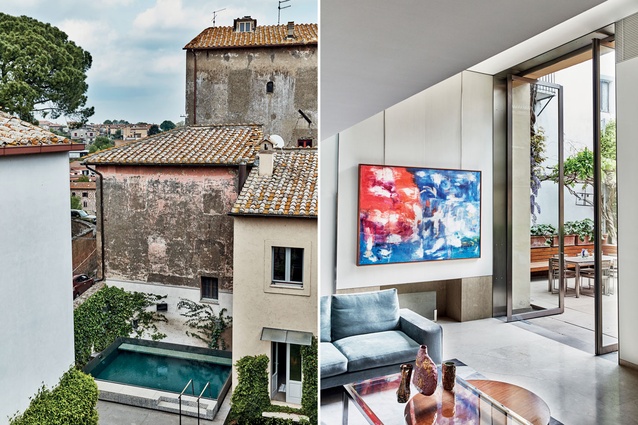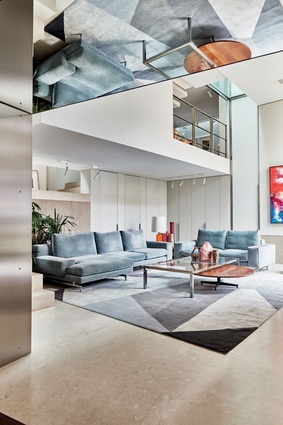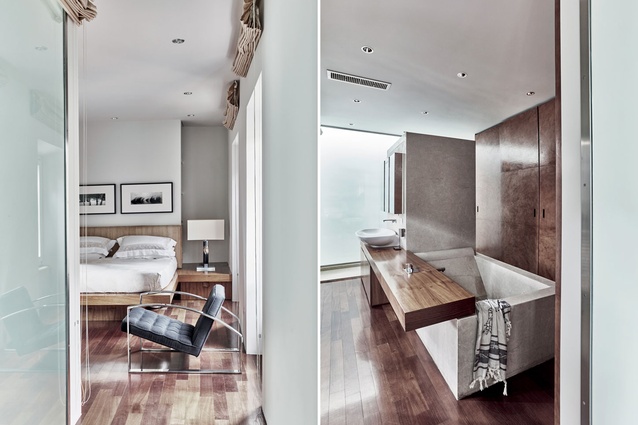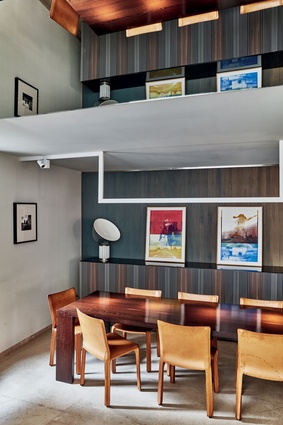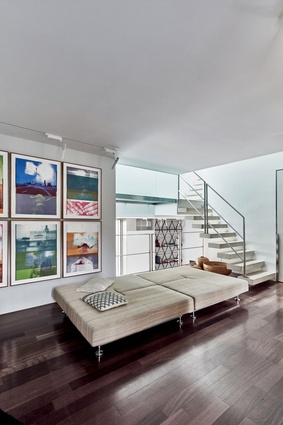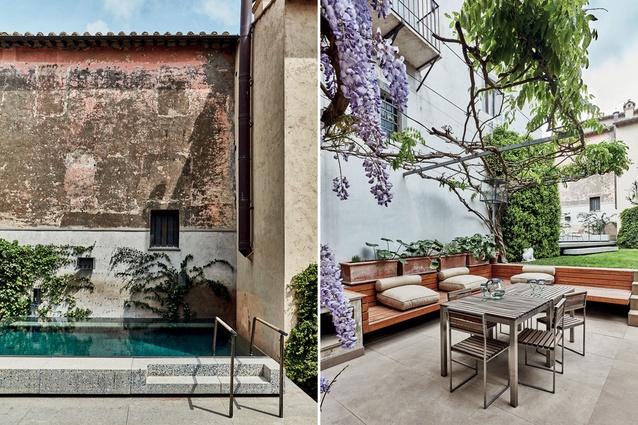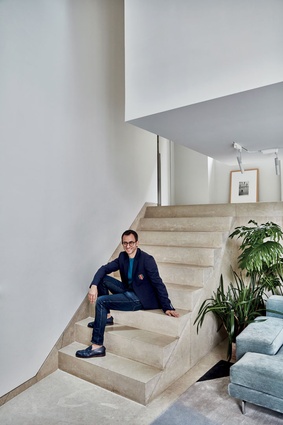Stealing beauty: Nepi Townhouse
In a historic village in southern Italy, this simple townhouse has been turned into a veritable gem where natural light and materials create contrast and spaciousness.
The historic village of Nepi is, in many ways, a typical Italian town. A mere 60km from Rome, Nepi has about 9,500 inhabitants. It boasts colourful houses and narrow streets and alleys all leading to Il Duomo; the 13th-century church of Santa Maria Assunta. In this picturesque setting and right next to Il Duomo is this townhouse, which has been totally restored by the Roman architect Massimo Adario, whose sense of understated luxury tends to inform his stunning work.
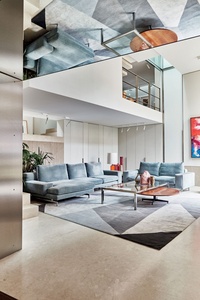
“Originally, the house was dark and with many small spaces, and the couple who own [it] wanted to open it up and make it more functional,” says Adario. The project became a major restoration, where the entire interior was gutted and only the outer walls were left behind (an iron skeleton was built to hold the three floor). As the traditional partitions were removed, it opened up the possibility for a whole new space distribution and allowed the 200m2 house to gain an extra 50m2 of area.
“The layout of the rooms is like a winding spiral up through the different floors. Each room alternates between being open and closed and being light and dark. It is a house that fits a large modern family who wish to spend time together but also to be able to retreat to their own rooms. When you stand in the living room, you can look up to the office, for example, it’s an open space,” explains Adario.
The original old staircase in front of the house has been preserved and, as a guest, one wanders right in from the historic village and is deposited into a totally modern house, with an impressive high-ceilinged living room.
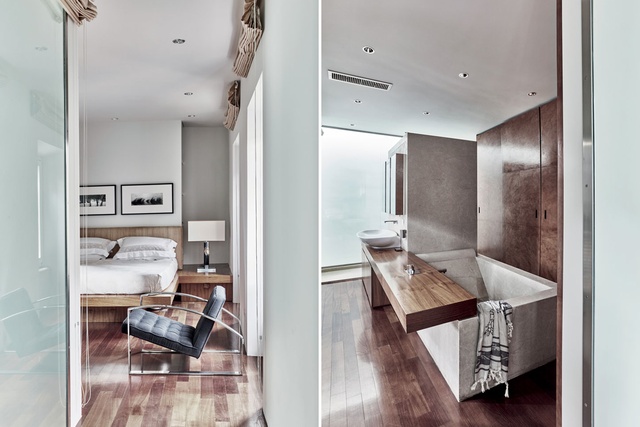
Adario has thought about all the details and the interaction he wanted to achieve in each room. The opening between the living room and the dining room, for example, has a mirrored ceiling and shiny metal plates, which create a mirror effect and make the dining room bigger than it really is. This selection also throws light into a room that would otherwise be dark and dim.
“Using several different materials gives depth to a room,” says Adario, who designed every detail to make the interior even more rich and indulgent.
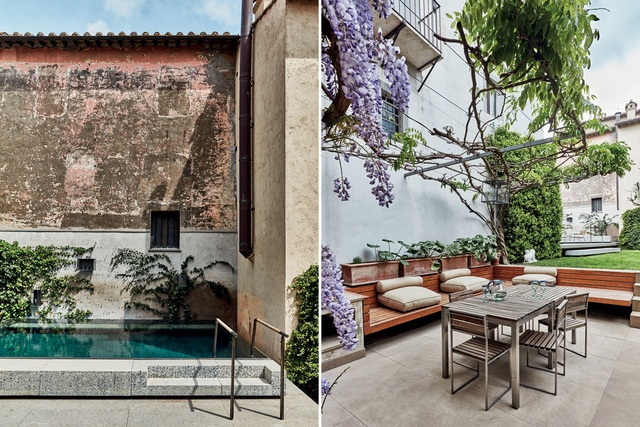
There is direct access from the Comiso stone-clad living room into the garden, and the very large floor-to-ceiling windows, which can be opened completely, invite nature into the room. These materials are in contrast to the first and second floors where master and guest rooms, as well as the office, boast wooden and warm floors.
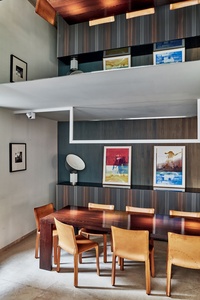
When creating open-plan rooms, it is important to have built-in storage, and Adario has merged this with the wall of each room. Nearly invisible if not for the metal handles, the spacious storage is an elegant and ingenious solution. In the living room, the built-in closet contains both a guest toilet and a hidden elevator, which runs up to the bedroom on the second floor.
For the owners, it was also important to have a garden that was easy to maintain and that could be a gathering point for the family when their children and grandchildren come to spend the weekend. A large terrace was created in front of the living room with built-in benches. At the back of the garden, near the guesthouse where it is most sheltered, a small swimming pool with a stone terrace was created.
“When I do interiors, material and the design are very important. I love to play with the shape of the furniture and making a room more sophisticated with just a few moves. I focus on the owners’ wishes but also on the property’s history,” ends Adario.

